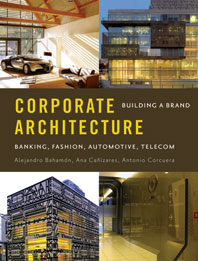In contrast to the excitement of the inaugural Chicago Architecture Biennial’s opening weekend, artist and Chicago native Theaster Gates addressed the press in a decidedly less enthusiastic tone. “As excited as I am about the history of Chicago architecture,” he said, “we also have an amazing history of racism, segregation, [and] a history of redlining and housing covenants that work against the poor, and against black and brown people.”
Gates’ contribution to the biennial, the transformation of a derelict 1923 neoclassical building into a community cultural center called the Stony Island Arts Bank, embodies the effects of redlining very succinctly. The building formerly known as the Stony Island Trust & Savings Bank occupies a corner on Chicago’s South Side, a predominantly black neighborhood 10 miles from the glossy skyscrapers of the Loop. During the Great Migration, as millions of black Americans moved North to flee the virulent racism of the South, predatory lending and discriminatory zoning segregated them into this corner of the city. And during the dissolution of Chicago’s manufacturing industry, it was these predominantly black neighborhoods that fell into the worst poverty and neglect. By the 1980s, the bank shuttered, and today, with its grand columns and Palladian symmetry, the building is the final remnant of a once-bustling corridor that now consists of vacant lots and strip malls.
As the neighborhood disintegrated, the building itself fared no better. “The skylights were completely eroded, and rainwater would cascade through the building,” said Mejay Gula, who became Gates’ full-time architect in 2011. Decades of water damage ate away the plaster and left a four-foot waterline in the basement, encasing the vault in a thick layer of rust. Rather than allow the city to demolish the building, however, Gates acquired it for $1 in 2012 with the hopes of resuscitating it.
“The 17 developers who tried to rehab the building prior to me all failed because they had one thing in mind: How do we make this building make money?” Gates said, “That will never work in black and brown communities. There needs to be another end game, another upside that has nothing to do with economics.”
Gates’ Rebuild Foundation—the non-profit arm of his artistic practice that has transformed similarly neglected South Side sites into a public cinema house, an artist residence, and community center since its formation in 2010—erected new walls, installed electrical wiring, and removed the third floor to re-secure the remaining decorative, hexagonal tiles of the soaring archway below it. Gates raised the funds to do so through his own artistic celebrity: During Art Basel 2013, he sold wealthy art collectors pieces of marble recovered from the property, engraved to resemble bank bonds. This summer during the art fair Expo Chicago, he invited high-power collectors to a gala in the bank’s atrium.
The finished product, unveiled at the opening of the biennial, provides a free place for local residents to gather, show art, host workshops, and peruse works of black cultural heritage—the late Frankie Knuckles’ vinyl collection, for example, and Edward J. Williams’ “negrobilia” collection of historically racist artifacts. A spacious palimpsest of its 1920s opulence, the Arts Bank features largely white spaces with minimalist lighting fixtures, with bits of ornate molding gorgeously patinated turquoise and bronze remaining on the walls, and places where the paint is still peeling. On the north side of the building, where the architectural team removed one part of the floor completely in order to replace the rotting joists, there is now a double-height library filled floor-to-ceiling with the Johnson Publishing Archives holdings, which magazines like Jet, Ebony, and Negro Digest.
The inclusion of Gates’ Stony Island Arts Bank in the biennial expands its discourse to address what CAB’s other exhibits — the scale models; the nebulous robot-assembled structure; the panel discussion on “What is Urgent?” — barely touch: the profession’s complicity in institutional exclusion and corporate interest; its being a privilege of the wealthy; its focus on the bottom line.
But where architecture can exclude, Gates seeks an architecture that redeems. “I’ve grappled with what it means to have great architecture become great again in a place where people would imagine that throwing resources toward would not be the smartest thing,” he said. “In communities such as this one, amazing things have always happened, but the thing we’re celebrating in the arts bank is a type of architecturally-high thing that could live again in black space.”















Post a comment to this article
Report Abusive Comment